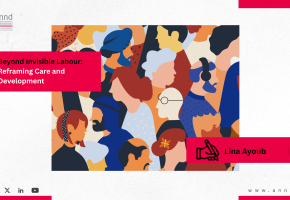
Case study: In the hottest country in the world: Who is most vulnerable to climate change? Climate, migration & health in Kuwait

This research is a part of the Arab Watch Report 2023 on the right to Health.
Case study: In the hottest country in the world: Who is most vulnerable to climate change? Climate, migration & health in Kuwait - Barrak Alahmad, PhD
Please click here to download the full report.
Introduction
While climate change, as a global crisis, affects all aspects of life, including our health, these impacts have far-reaching consequences for vulnerable populations such as migrant workers. Migrant workers are a significant part of the workforce in Kuwait. Workers face many challenges in host countries, including discrimination, poor living and working conditions, and limited access to health services. The health of migrant workers will be further threatened by the impacts of climate change, which exacerbates the challenges they face and exacerbates health inequities and disparities. Migrants’ health is often neglected in host countries, and their right to health is frequently violated.
This case study aims to examine the impacts of climate change on the health of migrant workers in Kuwait and to explore the ways in which the right to health of these workers is being violated. The case study will shed light on the complex intersections between climate, migration and health in Kuwait, and provide overarching recommendations tailored specifically for migrant workers who are at the frontline of extreme climate conditions.
Global climate change is a health crisis
In a series of assessments done by the Intergovernmental Panel on Climate Change (IPCC), the links between climate change and population health were clearly established (Intergovernmental Panel Climate Change 2021). Climate change is no longer only an issue for environmental alarmists and conservationists; it is a health emergency. The evidence now shows that the changing climate has led to unprecedented damages to the balance of ecosystems and sustainable living.
The pathways in which climate and health interact are complex, bi-directional and interdependent (Khraishah et al. 2022; Rocque et al. 2021). One of the simplest pathways is the direct effect of extreme heat on health. Over the last decade, heatwaves and extreme heat are becoming more frequent, longer in duration and higher in intensity. In an analysis of all global deaths around the world, it was estimated that non-optimal temperatures may be responsible for about 5 million deaths each year (Zhao et al. 2021). Another global analysis showed for every 100 heart-related deaths, at least 1 death is attributed to extreme temperatures alone (Alahmad et al. 2023). Prolonged exposure to heat can have a range of dangerous and even life-threatening effects on the human body (Figure 1). When the body is exposed to heat, it sweats to cool down and blood diverts away from many organs towards the skin. Sweating increases the risk of dehydration if fluids are not replenished. Strains on the heart, lungs and kidneys can exacerbate existing conditions in vulnerable individuals (Ebi et al. 2021). Additionally, more research is now showing adverse effects on mental health (Berry et al. 2010), increased healthcare demand (Bone et al. 2018), occupational injuries (Fatima et al. 2021) and others.
Barrak Alahmad, PhD
Please click here to download the full report.
This research is a part of the Arab Watch Report 2023 on the right to Health.
Recent publications

Argentina and the IMF: A Long History of Financial Dependence and Social Resistance - Tomás Battaglino
Related publications


